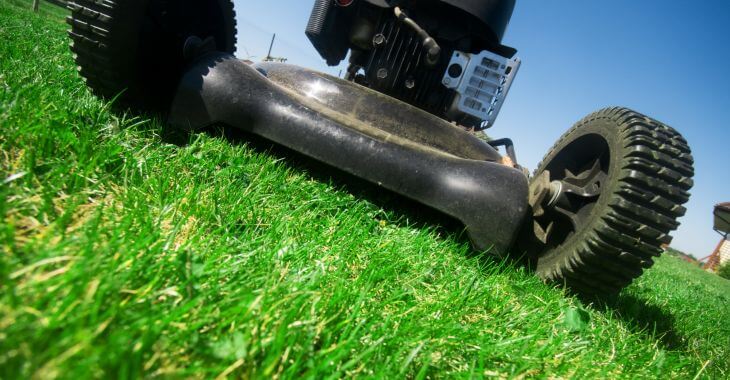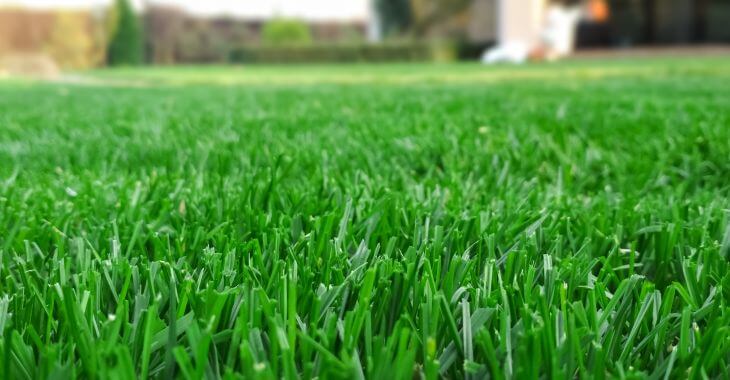When to Mow After Overseeding Your Lawn

Is your lawn thin or displaying bare spots? When your lawn is struggling to become the lush, green carpet you desire, it may require some effort to improve its health. You can aerate and overseed to loosen the soil and add more grass for a thicker lawn, but you need to know the aftercare as well. If you are planning to loosen the soil, overseed and fertilize to enhance your lawn, do you know when to mow grass after overseeding? Here are the steps to bring your lawn back to life with overseeding and how to maintain it afterward.
Why You Should Overseed and Aerate
What is overseeding? Overseeding is spreading grass seed over an existing lawn to thicken the grass. This is different than reseeding, which is removing the existing grass and weeds, then replanting the lawn. Aerating the lawn is an important step if there is thatch or compacted soil. Distributing grass seed on top of thatch or tough soil may be fruitless – the seeds need to embed in the soil to grow. Aerating loosens the soil and helps remove thatch to allow your overseeding to be productive.
Mow Your Lawn First
Before you overseed, you will need to mow your lawn. You want as little hinderance between the new seed and soil as possible. You will want to lower your mow deck and cut the grass lower than usual. Make sure to bag your clippings or rake after you mow to leave the soil exposed.
Prepare the Soil
Not everyone needs to aerate their lawn, but you should check the thatch and soil. If there is a layer of thatch covering the soil or the dirt is compacted, aerating may be necessary to ensure the new grass seed can find the soil. Another option is spreading some top soil over your lawn to provide some loose soil for the new seed. You only need a thin layer of soil, about ¼ inch, which is enough to help the grass seed but not enough to harm the existing grass.
How to Overseed
One of the easiest ways to overseed and fertilize is to buy grass seed that comes with fertilize in the mix. You can also fertilize the soil separately. Make sure to choose the right seed for your lawn. Your landscaper or landscape supply store can help you choose the best grass for your region and lawn.
To deliver the grass seed to your lawn, use a seed spreader. While you can do this by hand, it is difficult to spread the seed evenly. A seed spreader will ensure the ground is evenly covered with your new seed.
Feed the Seed
If you did not buy seed with fertilizer included, you will need to add fertilizer or grass food to help the new seed flourish. Once your seed and fertilizer are in place, you will need to water your lawn frequently. Plan on watering your lawn once or twice a day – be careful not to wash away your seed right after overseeding. A light watering every day will ensure your new seed has enough moisture.
When to Mow After Overseeding
Not only should you mow after overseeding, but it is an important part of the nurturing process. You do not want to mow too soon and damage the young grass, but you also do not want to wait to long. The exact timing will depend on how fast your new grass grows and the stability of the roots.
It will usually take 2-4 weeks for the new grass to grow and establish strong enough roots to successfully mow. You can check the stability of the new grass with the “tug test.” Gently pull on the new grass to see if it has resistance. You want the roots to be established and not pull out easily.
How to Mow After Overseeding
It is important to not only know when to mow grass after overseeding, but how to mow your lawn. You will want a sharp mower blade to minimize the damage to the new grass blades. You will also want to raise your mower deck to the highest level. You do not want to cut more than a third of the new blades on the first couple of mowing sessions to avoid shocking the new grass. You may need to mow more often the first few months at the higher level to allow the new grass to become established.

One of the best ways to bring a thin, patchy lawn back to health is to aerate and overseed. If you prepare your lawn properly and know when to mow after overseeding your lawn, you can achieve beautiful results. You can also skip all the work and hire a landscaper to prepare, aerate, overseed, fertilize and mow your lawn for professional results.

